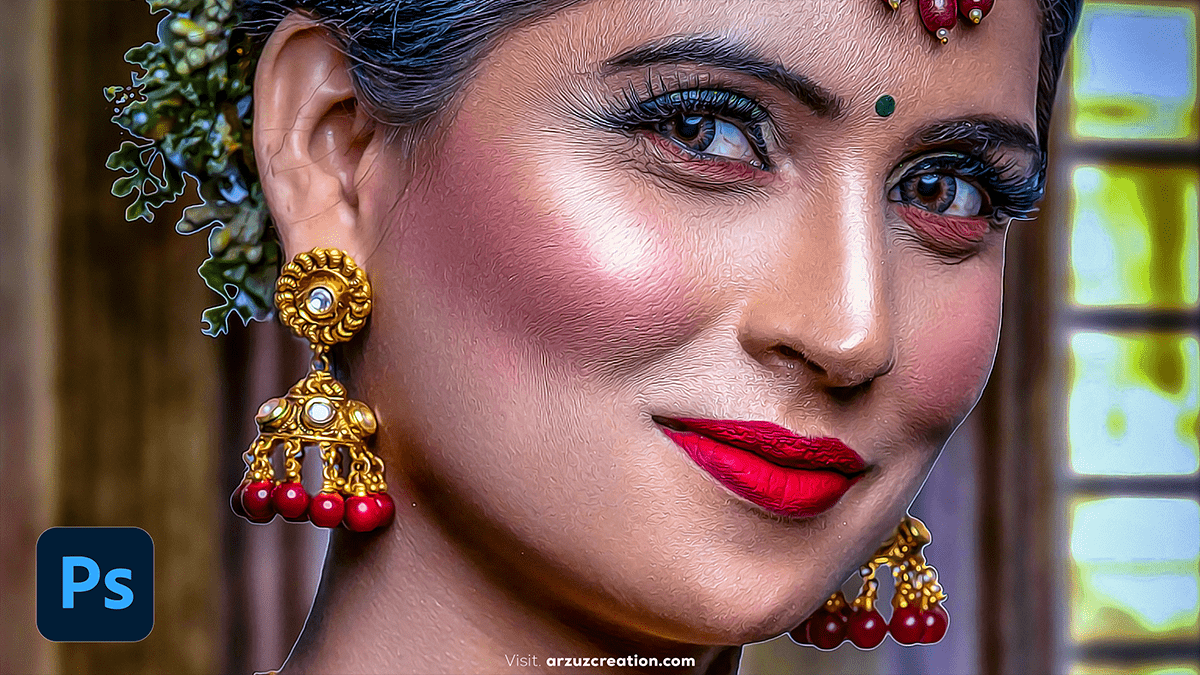Digital Art: How to Use Photoshop to Create Stunning Digital Art,

Therefore, Creating stunning digital art in Photoshop involves a combination of drawing, painting, blending techniques, and using powerful tools. In other words, Here’s a step-by-step guide to get you started on creating amazing digital art:
Set Up Your Workspace:
- Canvas Size: Start by creating a new document (File > New) with a large enough canvas, like 3000×3000 pixels at 300 DPI, for detailed work.
- Arrange Panels: Ensure panels like Layers, Brushes, and Colors are open for easy access (Window > Layers/Brushes/Colors).
Use High-Quality Brushes:
- In other words, Photoshop has a variety of built-in brushes, but you can also download specialized brushes online.
- However, Go to the Brush tool (B), right-click, and explore different brush presets. Use textured brushes to add unique effects to your strokes, like pencil, watercolor, or oil paint looks.
Digital Art: How to Use Photoshop, Layering:
- In other words, Always work with multiple layers. Create separate layers for background, midground, and foreground elements. This allows for easy adjustments without affecting other parts of the artwork.
- However, Use layer masks for non-destructive editing (click the mask icon in the layers panel). This lets you hide or reveal parts of a layer with more precision.
Sketch Your Outline:
- However, Use a basic brush (like a pencil brush) to sketch the basic shapes and forms of your subject. This can be rough since you’ll refine it later. Lower the opacity of this layer when moving to more detailed work.
Digital Art: How to Use Photoshop, Color Blocking:
- For instance, Create a new layer under your sketch and block in basic colors for your elements. Use a simple brush to fill in large areas without worrying about detail at this stage.
Shading and Blending:
- Above all, For shading, use soft brushes with low opacity (around 20%) to build up shadows and highlights gradually.
- For instance, The Smudge Tool (R) can be useful for blending colors softly, creating a smooth transition between tones.
- Above all, Experiment with different blending modes (e.g., Multiply for shadows or Overlay for highlights) to create depth.
Digital Art: How to Use Photoshop to Create Stunning Digital Art,

Lighting Effects:
- In addition, Add a new layer and apply lighting effects to enhance the mood of your artwork. Use the Gradient Tool (G) or soft brushes with colors like white or yellow for highlights and darker colors for shadows.
- After that, Play with glow effects by setting layers to Soft Light or Overlay, then gently painting with light colors.
Detailing:
- In addition, Gradually zoom in to refine details, using small brushes for intricate areas like facial features, hair, or texture.
- After that, Add texture overlays (like scanned paper or custom textures) for extra depth. Set them to low opacity and use blending modes such as Overlay or Soft Light.
Digital Art: How to Use Photoshop, Color Grading:
- In addition, Adjust the overall colors with Adjustment Layers (Layer > New Adjustment Layer). You can use tools like:
- Color Balance for shifting the tones.
- Curves for contrast.
- Hue/Saturation to adjust vibrancy.
- Gradient Maps to create artistic color grading effects.
Digital Art: How to Use Photoshop, Final Touches:
- After that, Apply final tweaks such as sharpening (Filter > Sharpen > Unsharp Mask) to make details pop.
- Similarly, Add small highlights and reflections for a polished look. Use a soft brush set to a light color to bring certain areas to life, like the eyes or metal surfaces.
Exporting:
- Similarly, When satisfied, export your work at the highest quality for digital or print (File > Export > Export As). Save in both PSD for editing and JPEG or PNG for sharing.
By mastering brushes, layering, and lighting, you can bring your imagination to life and create stunning digital art!
